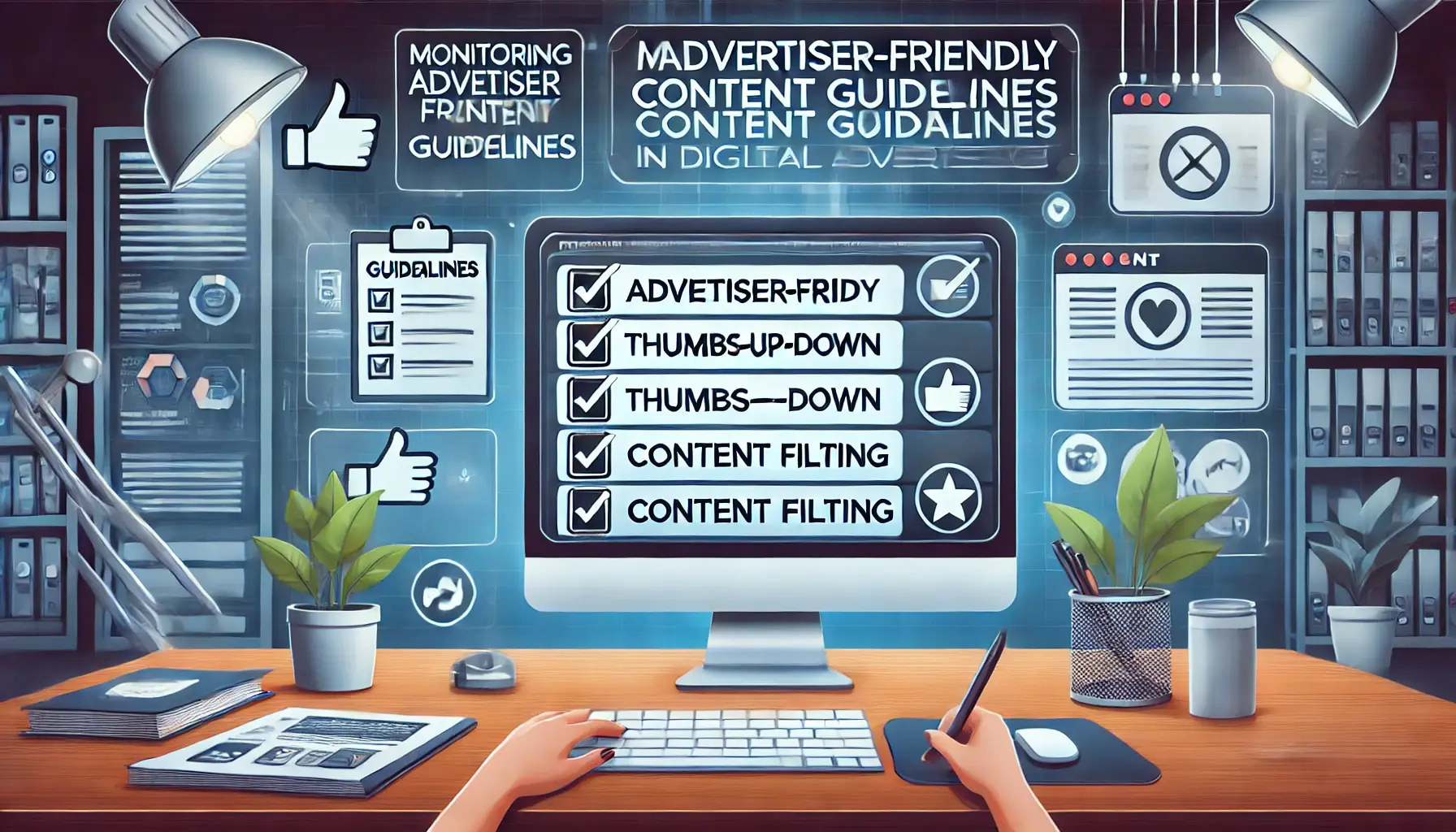In the dynamic digital advertising landscape, brand safetyMeasures to ensure ads appear in appropriate and non-harmful contexts. has emerged as a crucial concern for every advertiser.
Since YouTube is one of the most-used video content platforms, the need to make sure that your ad shows up in a safe and appropriate environment is greater than ever.
It is up to advertisers to be responsible for their brand’s reputation by implementing holistic brand safety measures.
This article will guide you through the key strategies and tools available to maintain brand safety while maximizing your advertising success on YouTube.
- Understanding YouTube’s Brand Safety Framework
- Advanced Targeting Options for Enhanced Brand Safety
- Enhancing Brand Safety with Third-Party Verification Tools
- Staying Informed About YouTube’s Policy Updates
- Leveraging YouTube’s Transparency and Reporting Tools for Brand Safety
- Ensuring Brand Safety: A Comprehensive Takeaway
- Frequently Asked Questions About Brand Safety on YouTube
Understanding YouTube’s Brand Safety Framework
Before diving into actionable strategies, it’s important to understand the foundation of YouTube’s brand safety framework.
YouTube has implemented a robust system designed to protect advertisers from being associated with inappropriate or harmful content.
By understanding these policies, you can make informed decisions about your ad placements and ensure a positive association with your brand.

An illustration emphasizing YouTube’s brand safety framework and content moderation policies.
Overview of YouTube’s Brand Safety Policies
YouTube’s brand safety policies are designed to filter out content that violates community guidelines, such as videos promoting hate speech, violence, or explicit material.
The platform uses a combination of automated systems and human reviewers to identify and demonetizeThe process of removing monetization from content, often due to guideline violations. unsuitable content.
Familiarizing yourself with these policies will help you better navigate ad placement.
Advertisers can also use additional tools, such as YouTube’s ‘Restricted ModeA YouTube feature that filters out content deemed inappropriate for certain audiences.‘, to have finer targeting of where their ads should appear.
This proactive approach reduces the risk of brand association with objectionable material.

An illustration depicting the technological processes behind AI-driven content moderation.
The Role of AI and Machine Learning in Content Moderation
YouTube leverages advanced AI and machine learning algorithms to analyze videos and flag potentially unsafe content.
These technologies enable real-time content assessment, ensuring advertisers’ campaigns maintain alignment with their values.
- AI systems automatically review uploaded videos for violations of community guidelines.
- Machine learning improves over time, enhancing accuracy in identifying harmful content.
- Advertisers can customize their exclusion settings to refine ad placements further.
Understanding how these technologies work allows you to trust the system and make more confident advertising choices.

An illustration symbolizing the ethical responsibility of following community guidelines in digital advertising.
Importance of Adhering to Community Guidelines
Adhering to YouTube’s community guidelines is essential for both content creators and advertisers.
By being an advertiser, it means you fall in line with the community guidelines to ensure your campaigns positively resonate with audiences without being hit by penalties such as restricted ad placements or demonetization.
By keeping ahead of policy changes and leveraging YouTube’s tools to filter inappropriate content, you can confidently promote your brand in a safe environment.
Understanding YouTube’s policies is the first step to ensuring your ads appear alongside suitable content. YouTube’s robust framework helps advertisers maintain brand reputation.

An illustration highlighting the precision and control in ad targeting for enhanced brand safety.
Advanced Targeting Options for Enhanced Brand Safety
Effectively utilizing YouTube’s advanced targeting options is crucial for maintaining brand safety and ensuring your advertisements reach the intended audience.
By strategically selecting where and to whom your ads are displayed, you can minimize the risk of association with inappropriate content and enhance the overall impact of your campaigns.

An illustration depicting the process of refining ad placements through topic and placement exclusions.
Utilizing Placement and Topic Exclusions
One effective method to safeguard your brand is by implementing placement and topic exclusions.
With this approach, you’ll avoid having your ads show on channels, videos, or content categories that aren’t aligned with your brand values.
- Placement Exclusions: Target specific YouTube channels or videos you want to exclude as inappropriate for your brand. This helps your ads avoid displaying alongside potentially damaging content to your brand reputation.
- Topic Exclusions: Exclude entire categories of content irrelevant or potentially hurtful to your brand. For instance, if your brand is family-oriented, you might exclude topics related to mature or controversial content.
By carefully selecting these exclusions, you can maintain greater control over your ad placements, thereby enhancing brand safety.

An illustration representing the use of demographic and geographic targeting in digital advertising.
Implementing Demographic and Geographic Targeting
Refining your audience through demographic and geographic targeting ensures that your ads reach viewers who are most likely to resonate with your brand message.
- Demographic Targeting: Tailor your ads based on factors such as age, gender, parental status, and household income. This precision helps in delivering your message to the most relevant audience segments.
- Geographic Targeting: Focus your advertising efforts on specific locations, ranging from countries to cities or even particular regions. This is particularly beneficial for businesses operating in defined areas or aiming to cater to local preferences.
Utilizing these targeting options not only enhances the relevance of your ads but also contributes to maintaining brand safety by avoiding unintended audiences.

An illustration showcasing different YouTube inventory types for better ad suitability and targeting.
Leveraging YouTube’s Inventory Types for Suitability
YouTube offers different inventory types that allow advertisers to control the environments in which their ads appear, aligning with their brand safety requirements.
- Expanded Inventory: Provides the broadest reach by allowing ads to appear on a wide range of content, including some that may be considered sensitive. This is the option for brands with less restrictive content guidelines.
- Standard Inventory: A balanced approach, excluding content that is not suitable for most brands. This includes videos with strong profanity or sexually suggestive themes.
- Limited Inventory: Offers the highest level of brand safety by limiting ads to content that meets strict guidelines and excludes most sensitive content. This is ideal for brands with stringent content requirements.
The choice of the right inventory type ensures that your ads run in contexts that meet your brand safety standards.
Incorporating these advanced targeting options into your YouTube advertising strategy allows you to maintain control over where and to whom your ads are displayed, upholding the integrity of your brand while maximizing campaign effectiveness.
Utilizing advanced targeting options like placement exclusions and demographic filters minimizes risks while maximizing ad effectiveness. Precision targeting ensures safer ad placements.

An illustration representing the integration of third-party verification tools to enhance brand safety in digital advertising.
Enhancing Brand Safety with Third-Party Verification Tools
Ensuring brand safety on YouTube is paramount for advertisers aiming to protect their reputation.
While YouTube offers native tools to assist in this endeavor, integrating third-party verification services can provide an additional layer of assurance, confirming that your ads are displayed in suitable environments.

An illustration representing third-party brand safety vendors and their role in enhancing ad security.
Overview of Third-Party Brand Safety Vendors
Several reputable third-party vendors specialize in brand safety verification, offering services that complement YouTube’s existing measures:
- DoubleVerify: A Google measurement partner since 2018, DoubleVerify provides comprehensive solutions for viewability and brand safety. Its services have expanded to platforms like YouTube Shorts, ensuring consistent protection across various formats.
- Integral Ad Science (IAS): IAS offers AI-driven tools that evaluate media quality based on brand safety and suitability. Their Total Media Quality product suite delivers third-party verification, ensuring ads run adjacent to appropriate content.
Collaborating with these vendors enhances your ability to monitor and control ad placements, reinforcing your brand safety strategy.

An illustration showing the integration of verification tools and monitoring within YouTube advertising campaigns.
Integrating Verification Tools into YouTube Campaigns
To effectively incorporate third-party verification tools into your YouTube advertising campaigns:
- Establish Partnerships: Engage with third-party vendors to integrate their verification systems with your YouTube campaigns, enabling real-time monitoring and reporting.
- Customize Settings: Work with these vendors to tailor brand safety parameters that align with your brand’s specific values and guidelines.
- Monitor Performance: Utilize the detailed analytics provided by these tools to assess ad placements and make informed adjustments to your campaigns.
This integration ensures that your advertisements consistently appear in contexts that uphold your brand’s integrity.

An illustration highlighting the advantages of using independent content verification tools in digital advertising.
Benefits of Independent Content Verification
Employing independent verification services offers several advantages:
- Enhanced Transparency: Gain clear insights into where your ads are displayed, fostering trust and accountability.
- Improved Compliance: Ensure adherence to industry standards and regulations, mitigating potential risks associated with inappropriate ad placements.
- Data-Driven Decisions: Access comprehensive data that informs strategic decisions, optimizing both brand safety and campaign effectiveness.
By leveraging third-party verification tools, you bolster your brand safety efforts, ensuring your advertising initiatives on YouTube are both secure and successful.
Independent verification tools such as DoubleVerifyA third-party verification tool for brand safety and ad viewability. and IAS enhance transparency, helping advertisers ensure their ads are displayed in secure and suitable environments.

An illustration showing a workspace with digital tools and notifications representing YouTube’s policy updates.
Staying Informed About YouTube’s Policy Updates
Maintaining brand safety on YouTube requires advertisers to stay updated on the platform’s evolving policies.
Regularly reviewing YouTube’s guidelines ensures that your content aligns with current standards, thereby protecting your brand’s reputation.

An illustration showing a digital workspace with tools for monitoring and ensuring advertiser-friendly content standards.
Monitoring Advertiser-Friendly Content Guidelines
YouTube periodically updates its advertiser-friendly content guidelines to address emerging concerns and societal changes.
For example, in October 2023, YouTube updated its ‘Harmful or dangerous acts’ policy to ‘Harmful acts and unreliable content,’ clarifying that content making demonstrably false claims undermining electoral or democratic processes doesn’t earn ad revenue.
By regularly reviewing these updates, you can ensure your advertisements are placed alongside appropriate content, maintaining brand safety.

undefined
Engaging with YouTube’s Advertiser Feedback Programs
YouTube values feedback from its advertising community to refine its policies and tools.
Participating in these programs allows you to:
- Provide Input: Share your experiences and concerns, influencing future policy developments.
- Stay Informed: Receive early notifications about upcoming changes, enabling proactive adjustments to your campaigns.
Active engagement ensures that your brand safety needs are considered in YouTube’s ongoing policy evolution.

An illustration representing the use of YouTube’s official resources like help centers and tutorials for advertisers.
Utilizing YouTube’s Official Resources
YouTube offers various resources to help advertisers stay informed:
- Help Center: Access detailed articles on policies and best practices.
- Official Blog: Read about the latest updates and insights directly from YouTube.
- YouTube Advertisers Channel: Watch videos on industry trends and advertising strategies.
Leveraging these resources keeps you informed about policy changes affecting brand safety.
By actively monitoring policy updates, engaging with feedback programs, and utilizing official resources, you can effectively navigate YouTube’s dynamic environment, ensuring your advertising strategies consistently uphold your brand’s integrity.
Staying updated on YouTube’s evolving policies helps advertisers proactively adapt strategies, ensuring compliance and effective brand safety measures.

An illustration representing the use of YouTube’s transparency and reporting tools to maintain brand safety.
Leveraging YouTube’s Transparency and Reporting Tools for Brand Safety
Ensuring brand safety on YouTube requires advertisers to utilize the platform’s transparency and reporting tools effectively.
These resources provide insights into ad placements and enable prompt action to maintain a secure advertising environment.

undefined
Utilizing YouTube’s Ad Placement Reports
YouTube’s ad placement reports offer detailed information about where your ads appear, helping you assess the suitability of these placements.
By regularly reviewing these reports, you can:
- Identify Inappropriate Placements: Detect any instances where your ads may have been displayed alongside content that doesn’t align with your brand values.
- Refine Targeting Strategies: Adjust your targeting parameters to avoid future placements in unsuitable contexts.
Proactively managing ad placements through these reports enhances your brand safety efforts.

undefined
Implementing YouTube’s Brand Safety Controls
YouTube provides several controls to help advertisers maintain brand safety:
- Content Exclusions: Exclude specific content categories or sensitive topics from your ad campaigns to prevent association with undesirable material.
- Inventory Types: Choose from different inventory types—Expanded, Standard, or Limited—to control the range of content your ads may appear on, aligning with your brand safety requirements.
By configuring these settings, you can tailor your ad placements to uphold your brand’s integrity.

An illustration depicting the use of YouTube Analytics to monitor ad performance and engagement.
Monitoring Performance with YouTube Analytics
Utilizing YouTube Analytics allows you to monitor the performance of your ads and ensure they meet your brand safety standards.
Key metrics to track include:
- Viewership Data: Analyze who is viewing your ad and their level of engagement to ensure alignment with your target audience.
- Engagement Metrics: Assess likes, shares, and comments to determine audience reception and identify any potential issues.
Regular analysis of these metrics empowers you to make informed decisions to keep your advertising environment safe.
By effectively leveraging YouTube’s transparency and reporting tools, you can proactively manage your ad placements, ensuring they consistently align with your brand safety objectives.
YouTube’s ad placement reports and analytics provide valuable insights into ad performance and placement, enabling advertisers to make informed adjustments to protect their brand.

An illustration depicting the tools and processes involved in ensuring brand safety in online advertising.
Ensuring Brand Safety: A Comprehensive Takeaway
In today’s fast-paced digital advertising landscape, brand safety is not just a choice—it’s a necessity.
As YouTube continues to dominate as a leading video content platform, advertisers must adopt a multi-faceted approach to safeguard their reputation and achieve meaningful results.
This article has explored key strategies to help advertisers navigate the complexities of brand safety while maximizing campaign effectiveness.

An illustration representing the process of gathering insights and monitoring brand safety in online advertising.
Key Insights for Maintaining Brand Safety
Throughout this article, we discussed practical measures advertisers can take to protect their brands:
- Understanding YouTube’s Framework: Familiarize yourself with YouTube’s policies and how AI tools moderate content to ensure a safe advertising environment.
- Advanced Targeting Options: Use placement exclusions, demographic filters, and inventory types to maintain control over ad placements.
- Third-Party Verification: Leverage independent tools like DoubleVerify and IAS to enhance transparency and confirm ad suitability.
- Staying Informed: Regularly monitor YouTube’s policy updates and participate in feedback programs to stay ahead of changes.
- Transparency Tools: Utilize YouTube’s reporting and analytics tools to track ad performance and maintain alignment with your brand’s goals.

An illustration representing the process of finalizing brand safety strategies in digital advertising.
Final Thoughts on Brand Safety
Achieving and maintaining brand safety is an ongoing effort that demands vigilance, adaptability, and strategic planning.
By integrating YouTube’s native tools with third-party resources and keeping updated on policy changes, advertisers can create a safe and efficient advertising ecosystem.
As you move forward, remember that protecting your brand is not just about avoiding the bad; it’s about forging positive, meaningful connections with your audience.
A well-executed brand safety strategy ensures your message resonates in the right contexts, driving trust, loyalty, and long-term success.
Brand safety is an ongoing effort. By combining YouTube’s tools with third-party resources, advertisers can confidently protect their reputation and connect with their audience.

An illustration representing the process of finalizing brand safety strategies in digital advertising.
Your campaigns can be managed by an agency specialized in Google Ads, check out our service page.
Frequently Asked Questions About Brand Safety on YouTube
Ensuring brand safety on YouTube is crucial for advertisers looking to protect their reputation and optimize campaign effectiveness.
Here are a few common questions and concise answers to help you navigate this important aspect of digital advertising.
YouTube’s brand safety guidelines include content categorization, sensitive category exclusions, and digital content labels to ensure that ads only show against appropriate videos.
Use YouTube’s content exclusions and inventory types to manage where your ad may appear, and third-party verification tools for added confidence.
Third-party verification tools, like DoubleVerify and IAS, provide independent assessments of ad placements, enhancing transparency and confirming ad suitability.
Regularly monitor YouTube’s official resources, such as the Help Center and official blog, and participate in advertiser feedback programs to stay informed about policy updates.
Review YouTube ad placement reports for inappropriate placements, adjust your targeting strategies, and take advantage of reporting tools to have issues resolved quickly.
YouTube uses AI and machine learning algorithms, as well as human reviewers, to evaluate and classify content in an effort to prevent ads from serving on harmful content.
Yes, you can control where and to whom your ads appear by using placement exclusions, topic exclusions, and demographic and geographic targeting.
YouTube has Expanded, Standard, and Limited inventoryYouTube's inventory type with the highest safety standards, excluding nearly all sensitive content. types that allow advertisers to select the range of content their ads can appear on, best meeting their brand safety needs.
Utilize YouTube Analytics to track viewership data and engagement metrics, ensuring your ads meet your brand safety standards and resonate with the intended audience.












